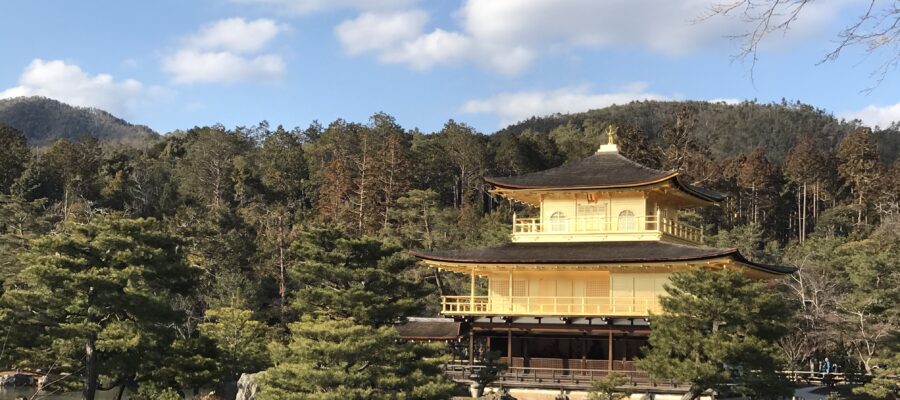観光客にとって京都のイメージって何でしょうか。日本のイメージと言えば、富士山かも知れませんが、京都のイメージっていうと、やはり金閣寺なのかもしれません。コロナ感染症が流行する前は、ほとんど毎週、京都に通い、必ずと言っていいほど、金閣寺に外国人の方をお連れしていました。
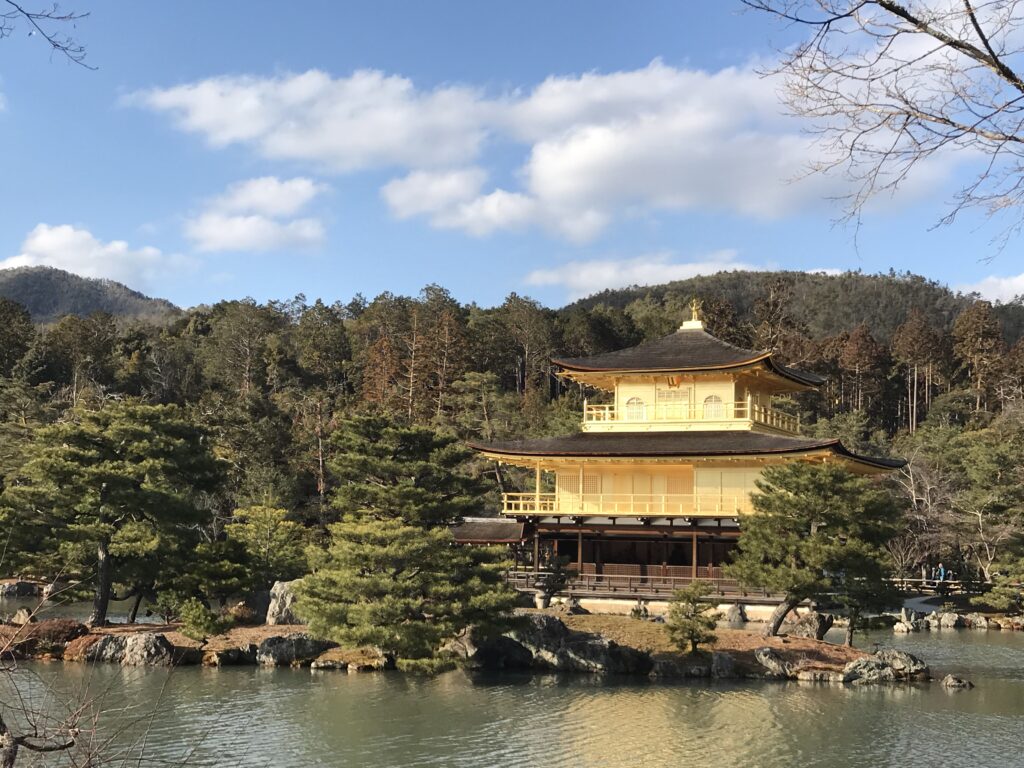
まず、入口となる山門には五戒が掲示されています。昔、アメリカ映画で「十戒」というのがありましたが、この門をくぐるには、半分の五戒を守るだけで、十分だそうです。殺すな、盗むな、不倫をするな、嘘をつくな、酒におぼれるな、ということでしょうか。まっとうな生活をしている人であれば、問題ないでしょう。当方の知り合いのガイドさんたちは、ここでの解説で、観光客を笑わせてから入門してきます。
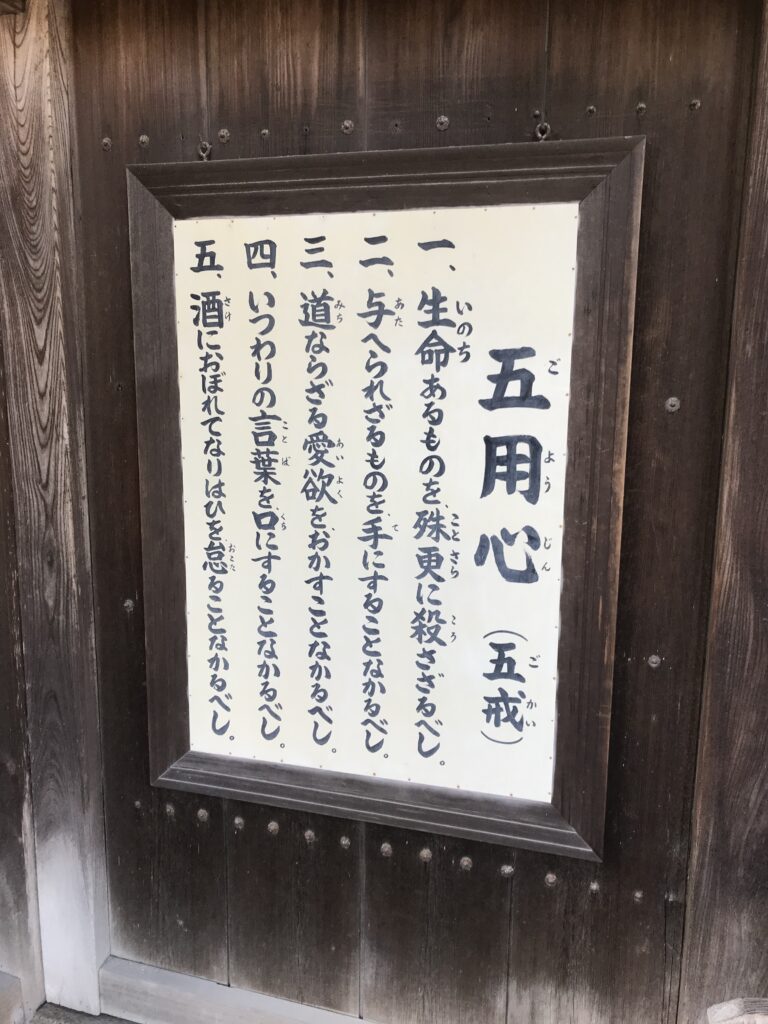
門を入って左手方向には鐘楼があります。鎌倉時代前期の製作だそうです。それと共に音色が「黄鐘調」と書かれています。鐘の音に名前がついていることを初めてしりました。どんな音なのか想像できないのですが、おそらく音を聞いても、それが黄鐘調ということを記憶することは難しいように思います。
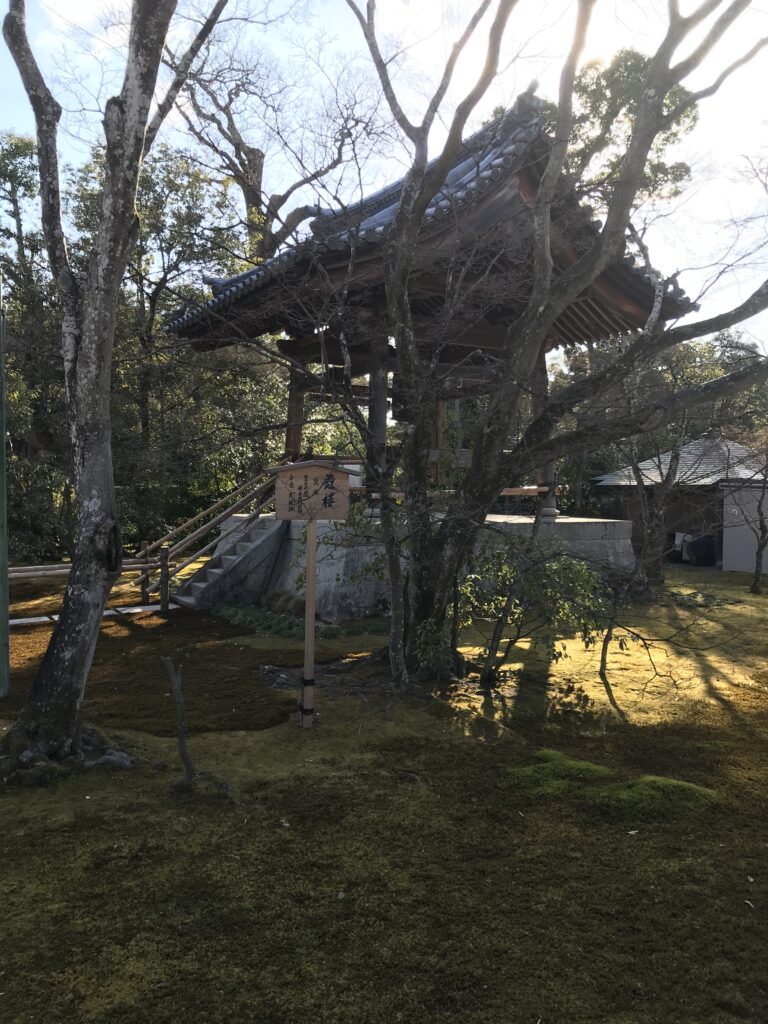
御存知のように、金閣寺ではお札(ふだ)をいただいて(購入して)入場します。お札は1年間有効で、毎年新しいお札に更新しないと御利益がないそうです。私も随分と沢山のお札をため込んでしまいました。日付も消印もないお札ですので、何回も使おうと思えば使えるはずですが、そこは良心にしたがって1度きりしか使いません。同行いただくガイドさんはガイドの免許を提示して、無料で入っていきますが、私はたいてい事業者側として同行するので、有料で入場するため、お札も貯まっていきます。
金閣寺で最初にお参りするのは、どこでしょうか。私の場合は、浄蔵貴所の供養塔です。それって誰?と思う方が多いと思いますが、平安時代に活躍した法力の持ち主で、あの八坂の塔が傾いた際に、法力で真っすぐにしたという伝説がある人です。私も困ったことがある時、助けていただけるようにお願いすると、何度か問題が解消したことがあります。現在も彼の法力が及んでいるのかもしれません。(完)
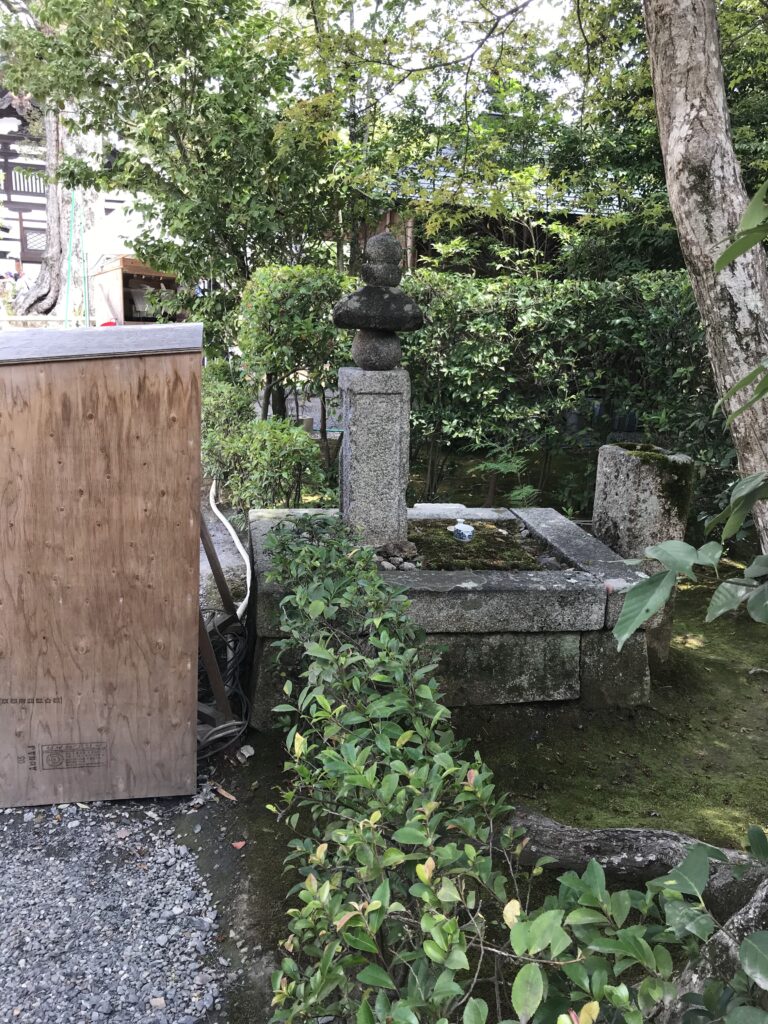
金閣寺の御朱印
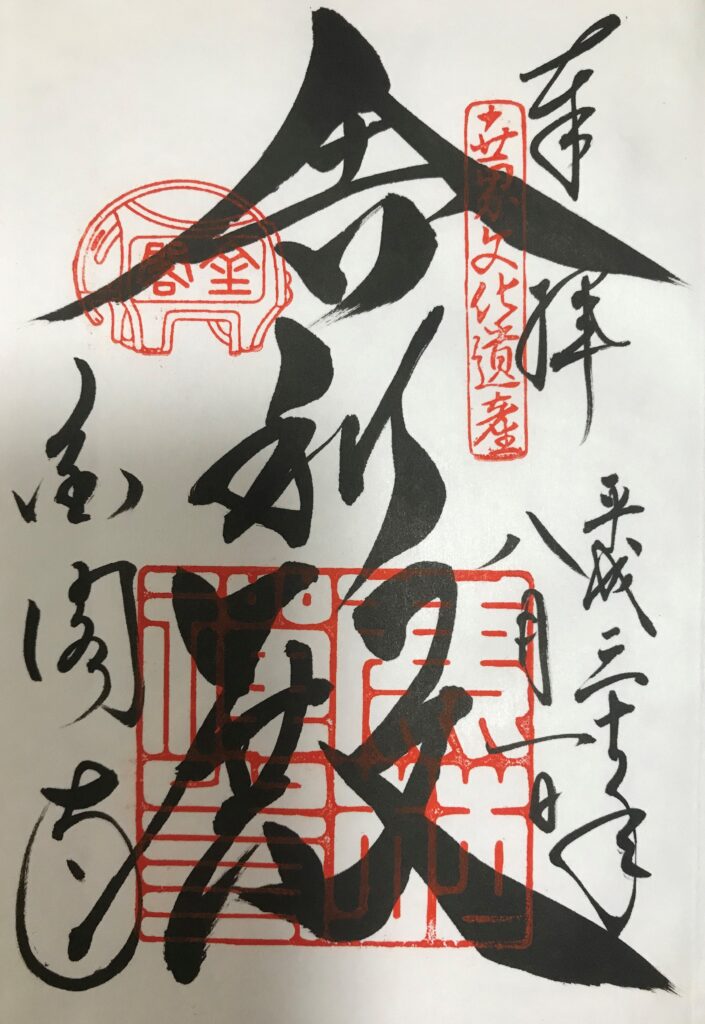
京都のお土産
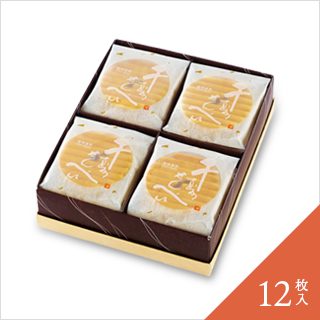
価格:1,728円
(2021/11/20 20:51時点)
感想(14件)
Kinkakuji (Golden Pavilion) Temple (1) Admission (Kyoto, Japan)
What is the image of Kyoto for tourists? Mt. Fuji may be the image of Japan, but the image of Kyoto may be that of the Golden Pavilion. Before the covid-19 pandemic, I used to go to Kyoto almost every week, and I used to take foreigners to the Kinkakuji Temple without fail.
First of all, the Five Precepts are posted at the entrance gate. There was once an American movie called “The Ten Commandments,” and it is said that only half of the five commandments need to be observed to pass through this gate. The five commandments are: Do not kill, do not steal, do not commit adultery, do not tell lies, and do not indulge in alcohol. As long as you are living an honest life, you should have no problem. The guides we know here make tourists laugh with their explanations before they enter the temple.
Entering the gate, there is a bell tower on the left. It was made in the early Kamakura period. Along with it, the tone is written “yellow bell tone”. This is the first time I learned that the sound of the bell has a name. I cannot imagine what the sound is like, but perhaps it is difficult to remember that it is a yellow bell tone even if one hears the sound.
As you know, you enter Kinkakuji Temple after receiving (or purchasing) an o-fuda (paper talisman). The o-fuda is valid for one year and must be renewed every year or else there will be no benefit. I have accumulated quite a lot of o-fuda. Since they are not dated or postmarked, they can be used many times if I want to, but I will follow my conscience and use them only once. The guide who accompanies guests enters the temple free of charge by showing his/her guide’s license, but since I usually accompany them as a group leader, I have to pay to enter the temple, so I accumulate the bills.
Where is the first place to visit at Kinkakuji Temple? In my case, it is the Cenotaph of Jozo Kisho. Who is that? Many of you may be thinking, “What is this?” He was a psychic who was active in the Heian period (794-1185), and legend has it that when that Yasaka Pagoda was leaning, he straightened it out with his psychic powers. Whenever I have a problem, I have asked him to help me, and several times the problem has been resolved. It may be that his Dharma power still extends to this day. (End)
Temple Kinkakuji (Pavillon d’or) (1) Admission (Kyoto, Japon)
Quelle est l’image de Kyoto pour les touristes ? Le Mont Fuji est peut-être l’image du Japon, mais l’image de Kyoto est peut-être celle du Pavillon d’or. Avant la pandémie de covid-19, j’avais l’habitude d’aller à Kyoto presque chaque semaine, et j’emmenais sans faute les étrangers au temple Kinkakuji.
Tout d’abord, les cinq préceptes sont affichés à la porte d’entrée. Il y avait autrefois un film américain intitulé “Les dix commandements”, et il est dit que seule la moitié des cinq commandements doit être observée pour franchir cette porte. Les cinq commandements sont : Ne pas tuer, ne pas voler, ne pas commettre d’adultère, ne pas mentir et ne pas s’adonner à l’alcool. Tant que vous menez une vie honnête, vous ne devriez pas avoir de problème. Les guides que nous connaissons ici font rire les touristes avec leurs explications avant l’entrée dans le temple.
En entrant par la porte, il y a un clocher sur la gauche. Il a été construit au début de la période Kamakura. À côté, le ton est écrit “ton de cloche jaune”. C’est la première fois que j’apprends que le son de la cloche a un nom. Je ne peux pas imaginer à quoi ressemble ce son, mais il est peut-être difficile de se souvenir qu’il s’agit d’un son de cloche jaune même si on l’entend.
Comme vous le savez, vous entrez dans le temple Kinkakuji après avoir reçu (ou acheté) un o-fuda (talisman en papier). L’o-fuda est valable un an et doit être renouvelé chaque année, sinon il n’y aura aucun bénéfice. J’ai accumulé pas mal d’o-fuda. Comme ils ne sont ni datés ni oblitérés, ils peuvent être utilisés plusieurs fois si je le souhaite, mais je suivrai ma conscience et ne les utiliserai qu’une seule fois. Le guide qui accompagne les invités entre gratuitement dans le temple en montrant sa licence de guide, mais comme je les accompagne généralement en tant que chef de groupe, je dois payer pour entrer dans le temple, et j’accumule donc les billets.
Quel est le premier endroit à visiter au temple Kinkakuji ? Dans mon cas, c’est le cénotaphe de Jozo Kisho. Qui est-ce ? Beaucoup d’entre vous se demandent peut-être : “Qu’est-ce que c’est ?” C’était un médium actif durant la période Heian (794-1185), et la légende veut que lorsque la pagode Yasaka penchait, il l’a redressée grâce à ses pouvoirs psychiques. Chaque fois que j’ai un problème, je lui ai demandé de m’aider, et plusieurs fois, le problème a été résolu. Il se peut que son pouvoir du Dharma soit encore valable aujourd’hui. (Fin)
